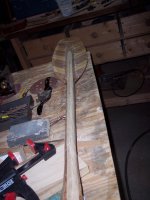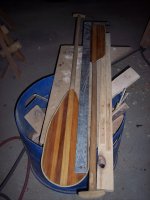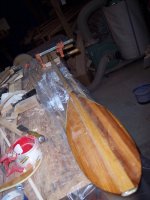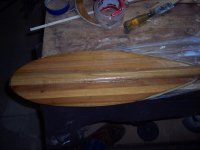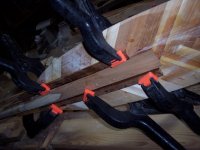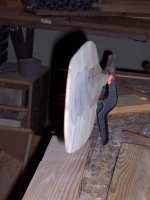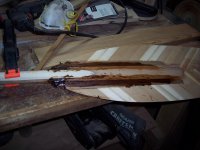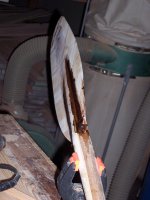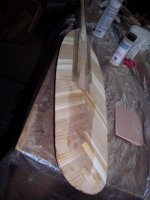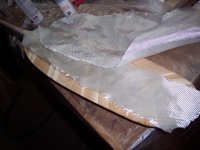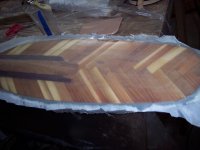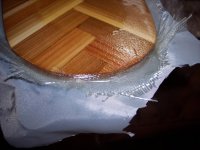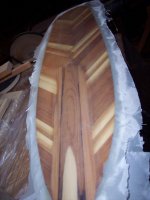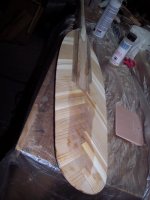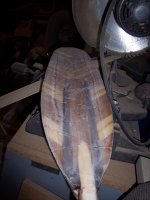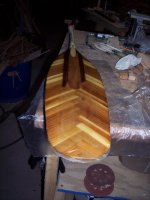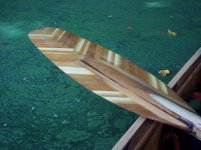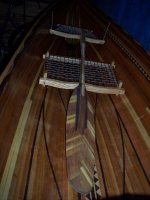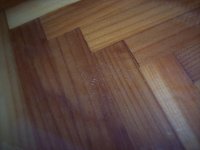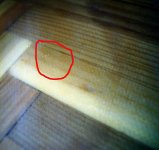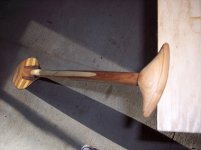I might as well try my hand at a paddle as well. My last ones were a bit oversized and sort of crude, but serviceable.
I've been watching some of the paddle threads, and its time to join the fun.
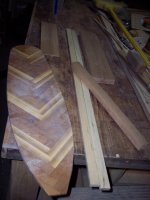
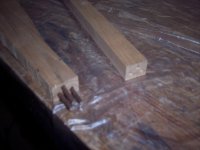
I actually managed to salvage all of this from the scrap/offcuts pile. If you think that cedar blade looks familiar, go find the shop mistakes thread. I you look closely, you will see a rather odd pattern on the hand grip piece. This was an experiment that will end up being cut back to a rather more conventional grip, more like what some of you call a 'pear.' The upper shaft/grip was pinned to the main shaft section, but I think I would rather have used something more like a finger joint.
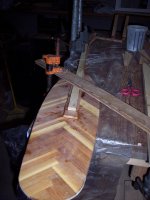
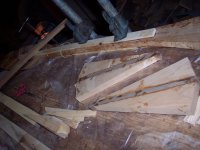
When all of your small, easy to handle clamps are in use, you improvise. The Cherry shoulder piece in the left photo did get better centered while the epoxy was still open. I'm not worried about the fabric print on the blade, as I'm intending to feather it to less than its current 1/4 thickness. The blade and shoulder area will be glassed.
Lets talk numbers:
I'm 5'11" and somewhat slight (135#, wiry)
Shaft length, top to shoulder: 27" Measuring references suggested I try 29", but in experimenting the 27" seemed better.
Blade (max) is 6 1/2" x 23 3/4"
Blade area, once curves are taken into account, would be better estimated as less than 6" x 23", or 138 sq. inches.
I've been watching some of the paddle threads, and its time to join the fun.


I actually managed to salvage all of this from the scrap/offcuts pile. If you think that cedar blade looks familiar, go find the shop mistakes thread. I you look closely, you will see a rather odd pattern on the hand grip piece. This was an experiment that will end up being cut back to a rather more conventional grip, more like what some of you call a 'pear.' The upper shaft/grip was pinned to the main shaft section, but I think I would rather have used something more like a finger joint.


When all of your small, easy to handle clamps are in use, you improvise. The Cherry shoulder piece in the left photo did get better centered while the epoxy was still open. I'm not worried about the fabric print on the blade, as I'm intending to feather it to less than its current 1/4 thickness. The blade and shoulder area will be glassed.
Lets talk numbers:
I'm 5'11" and somewhat slight (135#, wiry)
Shaft length, top to shoulder: 27" Measuring references suggested I try 29", but in experimenting the 27" seemed better.
Blade (max) is 6 1/2" x 23 3/4"
Blade area, once curves are taken into account, would be better estimated as less than 6" x 23", or 138 sq. inches.

